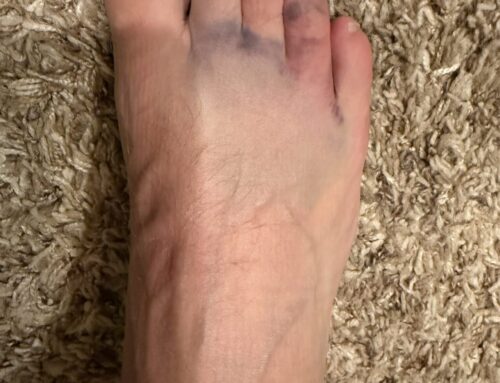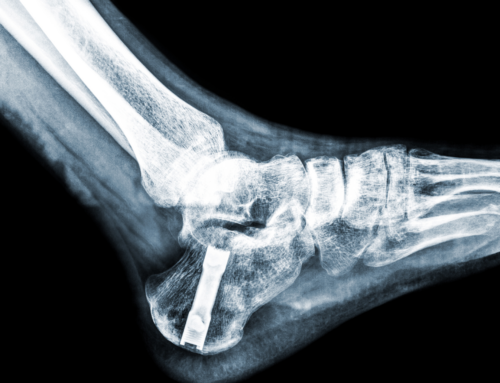Foot dislocations can be very painful and cause difficulty walking or bearing weight on the affected foot. They can also cause swelling, bruising, and deformity in the foot. If not treated promptly and adequately, foot dislocations can lead to long-term complications, such as arthritis or chronic pain.
If you suspect that you or a loved one has suffered a foot dislocation, it is essential to seek medical attention as soon as possible. Early treatment can help reduce the risk of long-term complications and improve the chances of a full recovery.
In his article, we will discuss what it is and whether you may need surgery to deal with it.
Introduction: What Is A Foot Dislocation and How Does It Occur?
A foot dislocation is a serious injury that occurs when the bones in the foot are forced out of their normal position. Foot dislocations can be caused by a variety of factors, including falls, accidents, sports injuries, or even simple missteps.
Foot dislocations are classified as either partial or complete, depending on the extent of the injury. A partial dislocation, also known as a subluxation, occurs when the bones are partially out of place, while a complete dislocation occurs when the bones are completely out of place.
Symptoms of A Foot Dislocation
The symptoms of a foot dislocation can vary depending on the extent of the injury and the location of the dislocation. Common symptoms of a foot dislocation include:
- Pain: Foot dislocations can be very painful, and the pain may be severe enough to make it difficult to bear weight on the affected foot.
- Swelling: The foot may swell due to swelling in the surrounding tissue. This can cause the foot to look larger than normal.
- Bruising: A foot dislocation can cause bruising in the affected area. The bruising may be visible on the skin or underneath the skin.
- Deformity: A foot dislocation can cause deformity in the foot, such as a bent or twisted appearance.
- Difficulty walking: It may be difficult or impossible to walk on the affected foot due to pain and swelling.
- Limited range of motion: The foot may be unable to move normally due to the dislocation, leading to limited range of motion.
How Is A Foot Dislocation Diagnosed?
A foot dislocation is typically diagnosed based on a physical examination, imaging tests, and a review of the patient’s medical history.
During the physical examination, the healthcare provider will look for signs of swelling, bruising, deformity, and limited range of motion in the foot. They may also ask the patient about the type of injury that occurred and any symptoms they are experiencing.
Imaging tests, such as X-rays, CT scans, or MRI scans, can help the healthcare provider get a better view of the bones and other structures in the foot. These tests can help confirm the diagnosis of a foot dislocation and determine the extent of the injury.
The healthcare provider may also review the patient’s medical history to help determine the best treatment approach. Factors that may be considered include the patient’s age, overall health, and any underlying medical conditions.
Overall, the diagnosis of a foot dislocation is based on a combination of a physical examination, imaging tests, and a review of the patient’s medical history. It is important to work closely with a healthcare provider to ensure an accurate diagnosis and an effective treatment plan.
Non-Surgical Treatment Options for A Foot Dislocation
Non-surgical treatment options for a foot dislocation may be recommended in some cases, depending on the severity of the injury and the length of time the bones have been out of place. Non-surgical treatment options can include the following:
- Immobilization: The foot may be placed in a cast or a splint to keep the bones in place and allow them to heal. The length of time the foot needs to be immobilized will depend on the severity of the injury.
- Physical therapy: Physical therapy can help improve strength, flexibility, and range of motion in the foot. This can be especially helpful if the foot has been immobilized for an extended period of time.
- Pain management: Pain medication can be prescribed to help manage pain and discomfort. This can be especially helpful in the early stages of recovery.
- Orthotic inserts: Orthotic inserts, such as shoe inserts or insoles, can help provide support and stability to the foot. This can be especially helpful if the foot has been weakened due to the dislocation.
Overall, the best treatment approach for a foot dislocation will depend on the specific circumstances of the patient and the severity of the injury. It is important to work closely with a healthcare provider to determine the best treatment plan for your needs.
When Surgery Is Necessary for A Foot Dislocation
Surgery for a foot dislocation may be necessary in certain cases, depending on the severity of the injury and the length of time the bones have been out of place.
If the foot dislocation is severe, or if the bones have been out of place for an extended period of time, surgery may be necessary to realign the bones and secure them in place. This is because the longer the bones are out of place, the more difficult it may be to realign them and restore normal function to the foot.
Surgery for a foot dislocation is typically performed under general anesthesia, which means the patient will be put to sleep during the procedure. The surgery can take anywhere from a few hours to several hours, depending on the extent of the injury.
During the surgery, the surgeon will carefully reposition the bones and secure them in place using screws, pins, or other devices. The surgeon may also need to repair any damaged tendons, ligaments, or blood vessels.
After the surgery, the patient will be taken to a recovery room to be monitored until the anesthesia wears off. The patient may need to wear a cast or a splint to protect the foot and help it heal. Physical therapy may also be recommended to help the patient regain strength and mobility.
Seeking Treatment for A Foot Dislocation?
Flint Foot & Ankle is the premier provider of foot dislocation treatments in Boise Idaho. With our highly-experienced and board certified orthopedic surgeon and advanced technology, we are able to provide our patients with the best care possible. Contact us before it’s too late!




